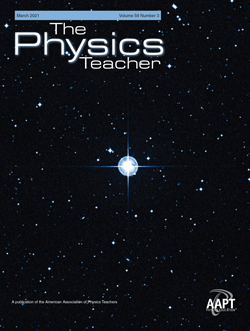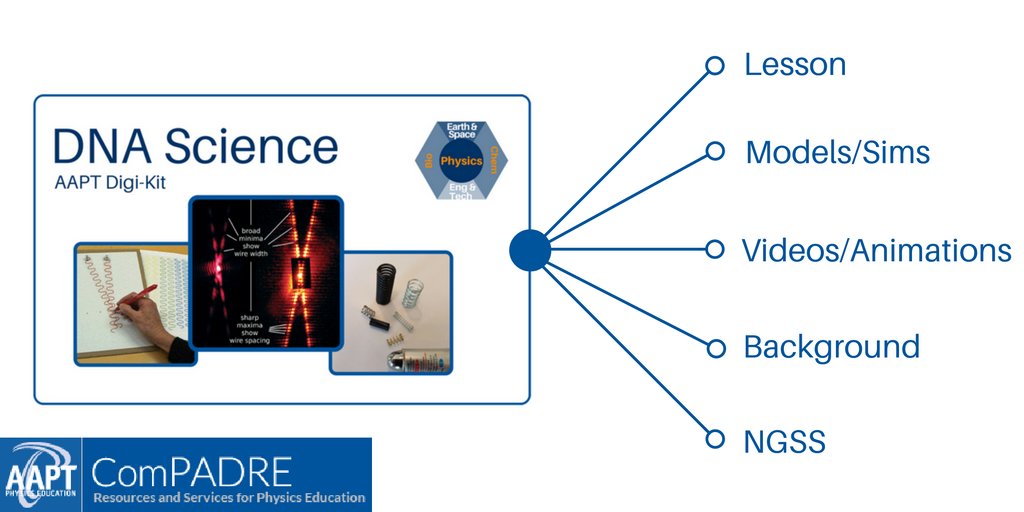The Physics Teacher
Volume 59 Issue 3
March 2021
Have Astronomers Found a Star Older Than the Universe?
This month's cover is a blue-light image of one of the oldest stars in our galaxy, taken by the Anglo-Australian Observatory (AAO) UK Schmidt telescope. (Note that the “plus sign” centered on the star is not part of the star itself but rather a diffraction effect due to the mirror supports.) This star is also known as the Methuselah star, and its precise age is a matter of special interest since upon casual inspection, one might conclude that it is older than the rest of the universe. Don Lincoln vividly relays this apparent paradox in his article “Have Astronomers Found a Star Older Than the Universe?” Enjoy! (credit: Digitized Sky Survey [DSS], STScI /AURA, Palomar/Caltech, and UKSTU/AAO).
Authors should submit their article and cover letter at this website: http://tpt.peerx-press.org/.
Columns
And the Survey Says..., Astronotes, Figuring Physics, iPhysicsLabs, Little Gems, Physics Challenge for Teachers and Students, Fermi Questions, Talkin' Physics, Technology In The Classroom, Tricks of the Trade, Visual Physics, and Websights.
AAPT AWARDS
Doc Brown Futures Award. DOI: 10.1119/10.0003648
Homer L. Dodge Distinguished Service Citations. DOI: 10.0003649
AAPT awards. DOI: 10.0003650
Papers
Zero Is Something by Arthur Eisenkraft. DOI: 10.1119/10.0003652
Have Astronomers Found a Star Older Than the Universe? by Don Lincoln. DOI: 10.1119/10.0003653
Exploring Hubble Constant Data in an Introductory Course by Jeffrey M. Hyde. DOI: 10.1119/10.0003654
Student Responses to Changes in Introductory Physics Learning Due to the COVID-19 Pandemic by Matthew Dew, Lewis Ford, Dawson T. Nodurft, Tatiana Erukhimova and Jonathan Perry. DOI: 10.1119/5.0027816
Demonstration to Show Resonant Oscillations of a Simple Pendulum Coupled to a Mass-Spring Oscillator by Blane Baker and Sungjune Park. DOI: 10.1119/10.0003655
Projectile Motion: The “Coming and Going” Phenomenon by Williams J. M. Ribeiro and J. Ricardo de Sousa. DOI: 10.1119/10.0003656
The Lady Be Good: A Case Study in Radio Frequency Direction Finders by Gregory A. DiLisi, Alison Chaney, Kenneth Kane and Robert A. Leskovec. DOI: 10.1119/10.0003657
Fury Road: Medical Physics Education Using Film by Jessica M. Fagerstrom, Edward I. Marshall, Matthew J. Nyflot and Jessica R. Miller. DOI: 10.1119/10.0003658
Acoustic Standing Waves: A Battle Between Models by Karel Kok and Franz Boczianowski. DOI: 10.1119/10.0003659
Impetus-Like Reasoning as Continuous with Newtonian Physics by Amy D. Robertson, Lisa M. Goodhew, Rachel Scherr and Paula R. L. Heron. DOI: 10.1119/10.0003660
Introducing the Future Circular Collider (FCC) into Secondary Classrooms by Xabier Cid-Vidal, Ramon Cid and Harry Victor Cliff. DOI: /10.1119/10.0003661
Resources for Supporting Students With and Without Disabilities in Your Physics Courses by Amanda Lannan, Jacquelyn J. Chini and Erin Scanlon. DOI: 10.1119/10.0003662
Gravitational Analogies for the Stopping Voltage and the Work Function in the Photoelectric Effect by Gonzalo Fuster and Roberto Rojas. DOI: 10.1119/10.0003663
The Write Stuff: Does Writing on Multiple-Choice Exams Correlate with Student Success? by Kaisa Young, Chadwick Young, Matthew Marlow, Mallory Cortez and Alberto Borsetta. DOI: 10.1119/10.0003664
An Arduino-Based Experiment Designed to Investigate Gas Pressure by Riza Salar. DOI: 10.1119/10.0003665
NGSS Engineering Practices in Physics Instruction: Building a Night Light by Zahraa Stuart, Angela M. Kelly, David Westerfeld and Mónica F. Bugallo. DOI: 10.1119/10.0003668
Energy Conservation in a Motor-Driven Generator by D. S. Goodman and J. E. Wells. DOI: 10.1119/10.0003669
Misconceptions Arising From the Infinite Solenoid Magnetic Field Formula by Marcus T. Wilson. DOI: 10.1119/10.0003670
BOOK REVIEWS
Understanding physics through dance: Review of Physics and Dance by Jennifer Birriel. DOI: 000367610.1119/10.0003672.
Race and Physics Teaching Collection Resource
Race and Physics Teaching Continued May 2020-January 2021
DNA Science Lesson & Digi-Kit
Inspired by an article from The Physics Teacher, this multidisciplinary lesson and digital resource collection is based on How Rosalind Franklin Discovered the Helical Structure of DNA: Experiments in Diffraction (Braun, Tierney, & Schmitzer, 2011). Click the image to access this resource.



